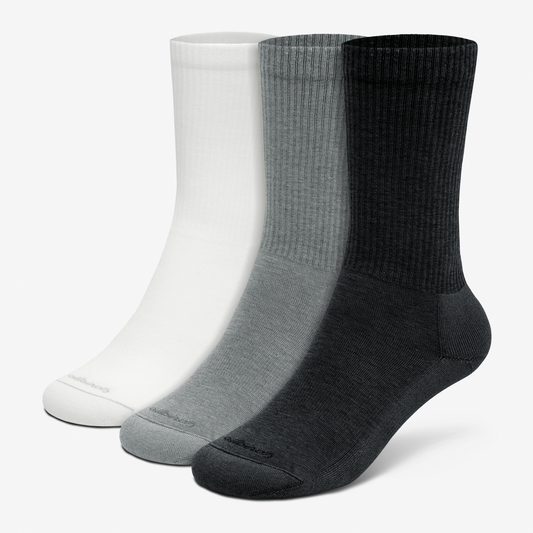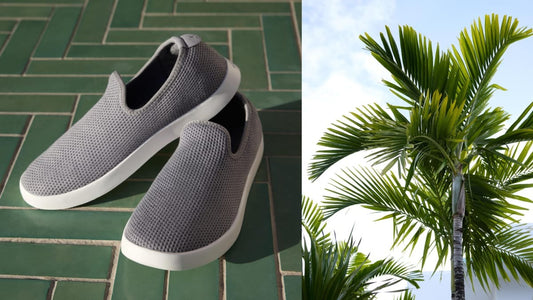You’ve heard it before: Walking is a great workout, especially if you have joint problems or don’t love running. So when you’re ready to increase the difficulty of your walking workouts, there are a few ways you can challenge yourself. Try any combination of these tips to take it from leisurely to let’s go.
Finding the right gear & shoes for your walking routine
It’s important to find the best gear for your walking workouts, especially when you’re walking faster, longer, and harder than before. Comfort during your workout should be of the utmost importance, so be sure to be prepared with apparel you can be active in.
The Tree Dasher and Tree Flyer, made from light & breezy eucalyptus tree fiber, are great choices because they’re lightweight, supportive, and optimized for everyday workouts and walks.
Looking to put a spring in your step? The Wool Flyer Mizzles are our water-resistant sneakers with a high-performance midsole that’s big on cushion and energy return.
Change your route to be more challenging
Is your current route nice and leisurely—and a bit too easy? What obstacles could you seek out to make your walk more of a workout? Could you find stairs you can add to your route? Seek out hilly paths?, Try a hiking trail nearby?
Hiking is its own amazing workout, too. It builds ankle strength and balance as you climb over different terrain and it naturally offers more elevation changes than you would probably find in a residential area. Try Allbirds hiking shoes, such as our Trail Runners SWT, with grippy outsoles and a water-repellant shield that’s perfect for hiking trails.
Charge up those hills
When you see a hill, don’t slow down or avoid it. See it as your next challenge and increase your speed as you climb. To work your legs and heart even more, you can also go back down the hill and climb it two to three times. For a slip on shoe that can support you climbing up that hill check out our Tree Dasher Relay.
Increase your distance
See if you can go farther on your walks, little by little. Increase your distance in small intervals if you’re worried about tiring yourself out. Track how long you tend to go and increase your distance by ¼ mile or ½ mile at a time.
The beauty of walks is that you can walk to 50% of your desired distance and know that you have to turn around and walk back; there’s no way to skimp!
Mix in strength exercises along the way
Your muscles are what keep you going! Before, during, or after your walk, try to add in strength exercises to increase heart rate and build muscle. As an example, before your walk, warm up with some windmill stretches, a set of max push-ups, and a 1-minute plank. Or, at the end of your walk, finish up by challenging yourself to 20 lunges, 20 squats, and 20 full sit-ups.
We’ve found that it’s easier to incorporate strength exercises into your walk when you use a trigger so that you won’t need to keep track of anything—or wind up forgetting altogether.
Some triggers could be:
-
when you see an uphill, do lunges as you climb it
-
when you pass a bench, do 10 push-ups with your hands on the bench
-
when you’re waiting to cross a road, do squats
Layer in jogs or sprints
If you’re working up to becoming a runner or just want to improve your cardiovascular conditioning, you may want to include some running or even sprinting in your walking routine.
Again, determine a trigger, like every time you hit an uphill, or see a dog, or reach another ½ mile, increase your speed to a light jog or a run for 30 seconds. If you enjoy walking around a track, try walking on the curves and jogging or sprinting on the straights. Your heart rate will definitely go up!
Build strength with weighted add-ons
We know that moving your own body weight is one level of challenge, so moving more than your body weight is an added challenge.
Try these tips on how to use weights to make your walk more intense:
-
Use handheld weights of 1-3 lbs each
-
Wear ankle weights; between 3-10 pounds should do the trick
-
Strap on a weighted vest or weighted backpack
With any of these, your movements may slow down, but you’ll probably feel the difference right away.
Increase your speed
Similar to running or other cardio exercises, the three main ways to increase the difficulty of your walking workout are to to go faster, add weight, or increase your range of motion. Try increasing your speed with these tips:
-
Find a playlist with upbeat songs that are between 125 and 140 beats per minute. If you keep your feet moving to the beat, your pace will naturally increase to keep you at a steady pace.
-
Walk with a friend who keeps a faster pace (plus, chatting can make the workout seem to go faster!).
-
Use your smart device to track—and increase—your pace as you go. Most wearable devices will report your pace in terms of time-per-mile. See where your pace generally sits and challenge yourself to beat it.
















